Prøve GULL - Gratis
just wait...
African Birdlife
|January/February 2023
Photographer, author and naturalist Hugh Chittenden is one of southern Africa’s most respected field biologists.

His canny observations and acute attention to bird behaviour have brought to light a wealth of insights into hitherto unknown courting, nesting and feeding activities. But it is his patience while wielding a camera that reflects his approach reminiscent of the old-school naturalists, who waited and waited for their ‘moment’ with birds. It’s an unhurried approach that these days is all too often disregarded. Here he shares some of his favourite images with us.

above A locally common resident and intra-African migrant, the Collared Pratincole is usually found at wetland margins and open areas near water. It breeds colonially and nesting pairs can number up to a hundred in an area. The eggs are laid in a shallow scrape and are cryptic, often closely matching the colour of the substrate.

right Large prey, such as small mammals and reptiles, will be needed to satisfy these three Black-headed Heron chicks and the adults will be kept busy from dawn till dusk provisioning their hungry offspring. This photograph was taken in mid-November at a heronry in Mpumalanga.
Denne historien er fra January/February 2023-utgaven av African Birdlife.
Abonner på Magzter GOLD for å få tilgang til tusenvis av kuraterte premiumhistorier og over 9000 magasiner og aviser.
Allerede abonnent? Logg på
FLERE HISTORIER FRA African Birdlife
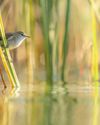
African Birdlife
stories begin at EYE LEVEL
ALTHOUGH I HAVE been taking photographs since 1998, it wasn't until 2019 that my hobby evolved into a serious pursuit. That's when I began to see photography not just as a means of capturing a moment, but as a form of art - something that can stir emotion, spark wonder and tell a deeper story.
1 mins
July/August 2025
African Birdlife
ALBERT the Wandering Albatross
Ahoy, shipmates, grab a pew and let me spin my yarn.
3 mins
July/August 2025
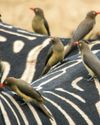
African Birdlife
I'll be back...
Southern African populations of oxpeckers were hit by triple hammer blows during the late 19th century and much of the 20th.
2 mins
July/August 2025

African Birdlife
BINDO and SABAP2
A match made in data science
2 mins
July/August 2025
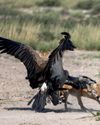
African Birdlife
PREDATORS of the pan
As regular visitors to Mabuasehube in the Botswanan sector of the Kgalagadi Transfrontier Park, we have often seen vulture feathers lying in the area of the waterhole at Mpayathutlwa Pan and have frequently observed a pair of black-backed jackals in the vicinity.
1 min
July/August 2025
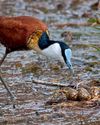
African Birdlife
Jacana & the egg thief
While on a photo expedition in the Richtersveld National Park with my brother Peter, we were watching one particular African Jacana on the Gariep River.
2 mins
July/August 2025
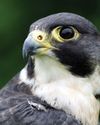
African Birdlife
A STRIPE FOR ANY OTHER PURPOSE?
Uncovering the adaptive complexities of falcons' malar stripes
2 mins
July/August 2025
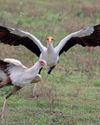
African Birdlife
grassland GLADIATORS
The Secretarybird is a highly soughtafter species for most birders on their first visit to Africa. It looks so strange, like a cross between a stork and an eagle. Even though it is widespread, occurring in almost any suitable habitat (grassland, open savanna and Karoo shrubland), it's generally uncommon.
1 mins
July/August 2025
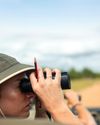
African Birdlife
SECRETS SKY
Jessica Wilmot is the driving force behind BirdLife South Africa's Flyway and Migrants Project, working across borders to safeguard some of the planet's most threatened species and habitats. Supporting BirdLife International's East Atlantic Flyway Initiative, Jessica is at the heart of efforts to keep our skies alive with birds, particularly the enigmatic European Roller, which is her current focus and passion.
6 mins
July/August 2025
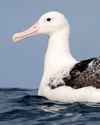
African Birdlife
Southern SIGHTINGS
Autumn is generally known to be quieter in terms of rarities across southern Africa, but the review period still had a few surprises for us, including a new species for the subregion. As always, none of the records included here have been adjudicated by any of the subregion's Rarities Committees.
3 mins
July/August 2025
Translate
Change font size
